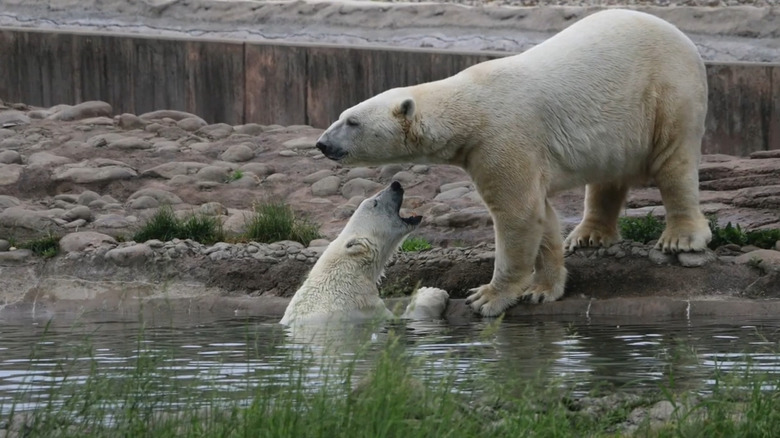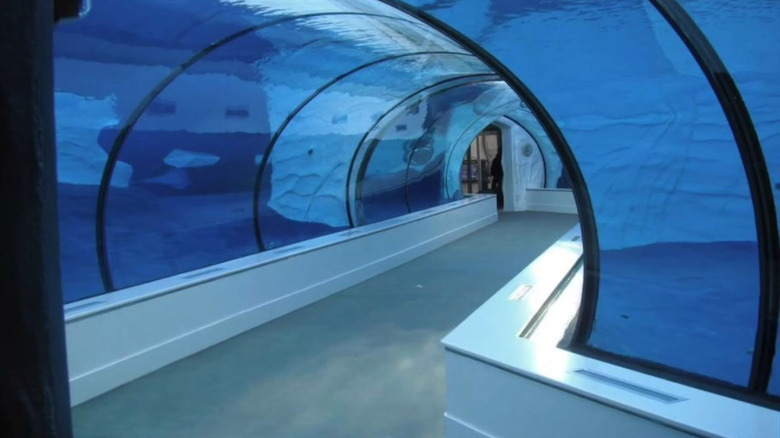The World's Largest Polar Bear Exhibit Is In A Surprising US City Zoo
Most of us live nowhere near polar bear habitat. Even if we did, they're not exactly the sort of animal that you can just go out and observe in the wild without a qualified guide. While seals are their main food source, they will attack humans if provoked or hungry enough. That means the only place most of us will ever encounter them is at a zoo.
If you're looking to experience these majestic bears in their habitats, you may assume you have to visit a national park in Alaska or merely settle for a nature documentary. Instead, you can actually visit them in the biggest polar bear exhibit in the entire world at the Detroit Zoo in Royal Oak, Michigan. While there are plenty of underrated and wonderful little zoos that have polar bears, like the Alaska Zoo in Anchorage, this is a more convenient experience for many people.
The $14.9-million polar bear exhibit at the Detroit Zoo is massive, covering a whopping 4.2 acres. It features three habitats that allow you to see these beautiful creatures in the tundra, open sea, and frozen ice pack. As a visitor, you can walk through the tundra (above), past the seals, and enjoy an exploration exhibition. You'll also get to experience the Arctic Ring of Life, which is an acrylic tunnel that lets you see the polar bears swimming above and around you. In addition to the polar bears and harbor and grey seals, you'll also witness arctic foxes and southern sea otters.
Visiting the polar bears at the Detroit Zoo
For those flying in, Detroit Metropolitan Wayne County Airport (aka the best in North America) is less than 30 miles from the zoo. The Detroit Zoo is on the pricier side with adults paying $27 for admission, and $24 for kids and seniors. That said, this exhibit might be the closest you'll ever come to polar bears, and it's worth it. Imagine seeing one swim right over you as you walk down a 70-foot clear tunnel. One reviewer on TripAdvisor said, "The Arctic Ring of Life is worth the price of admission alone. I went about noon and the polar bear I saw was very active and great fun to watch in and out of the water. I even caught a feeding time. Not something I'll soon forget!"
There are two bears in the exhibit: Suka is the female, born in 2012, and the male is Nuka, born in 2004. The average lifespan of a polar bear is around 20 years, so Nuka is a fuzzy elder gentleman. (There were once two cubs, Astra and Laerke, who were the offspring of Nuka and Suka, but they were moved in 2023 to Point Defiance Zoo & Aquarium in Tacoma, Washington.) In addition to "walking underwater," guests go through the Nunavut gallery where lovely Inuit art is displayed. The Exploration Station gives guests info about not just these bears, but what it's like to be in an arctic research station, studying the animals.
According to polarbearsinternational.org, there are only about 26,000 polar bears left in the world, as they deal with threats from climate change, encroachment into their territory, pollution, disease, and more. Getting a chance to see them up close and learning about them can help raise awareness of what's happening to these beautiful creatures.

